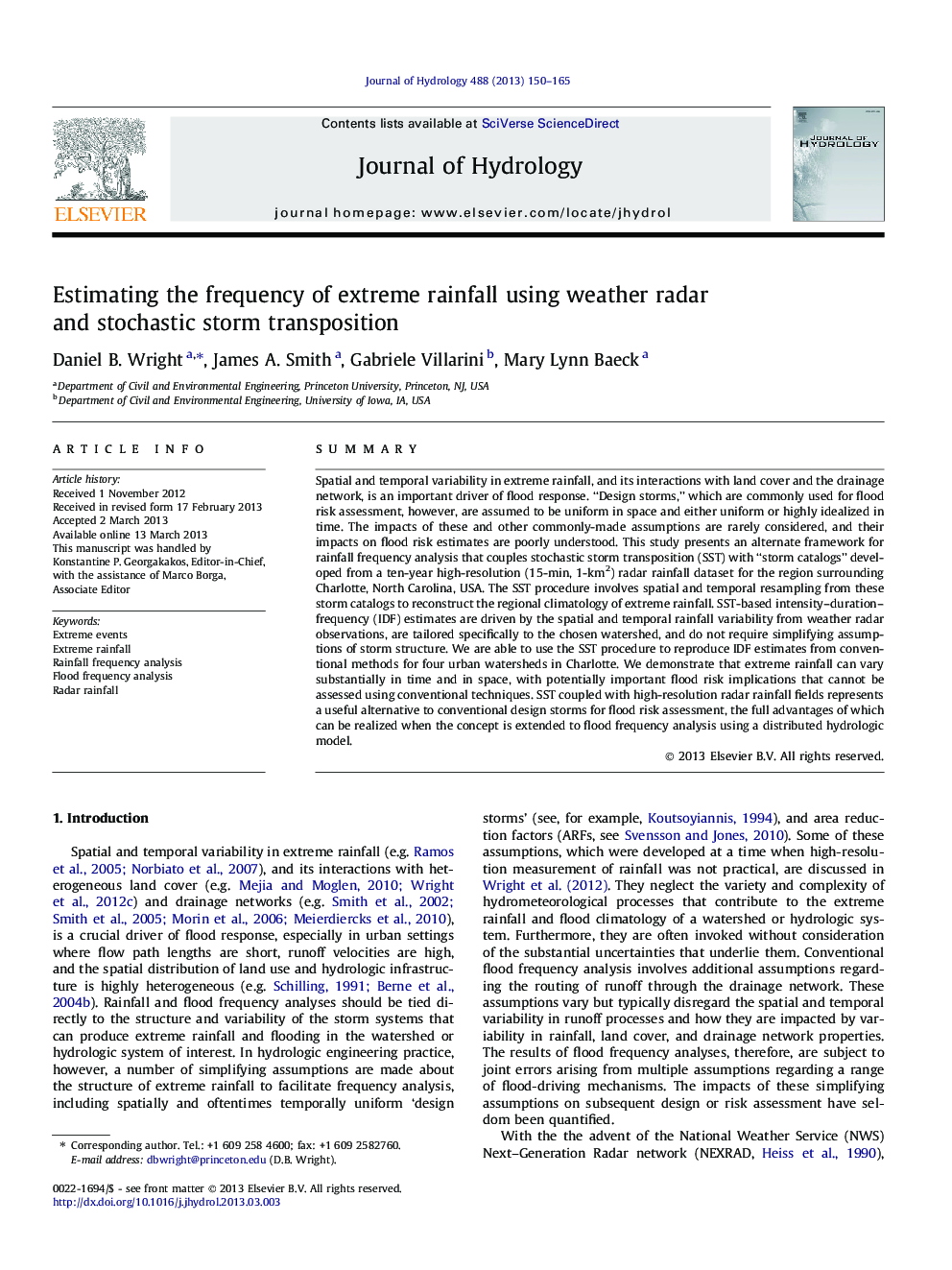| کد مقاله | کد نشریه | سال انتشار | مقاله انگلیسی | نسخه تمام متن |
|---|---|---|---|---|
| 4576312 | 1629960 | 2013 | 16 صفحه PDF | دانلود رایگان |

• Conventional rainfall frequency analysis relies on several simplifying assumptions.
• We couple stochastic storm transposition with radar rainfall for frequency analysis.
• SST with radar rainfall allows us to examine the structure of extreme rainfall.
• Extreme rainfall has high spatio-temporal variability that may impact flood risk.
• New methods allow flood risk estimation that considers extreme rainfall variability.
SummarySpatial and temporal variability in extreme rainfall, and its interactions with land cover and the drainage network, is an important driver of flood response. “Design storms,” which are commonly used for flood risk assessment, however, are assumed to be uniform in space and either uniform or highly idealized in time. The impacts of these and other commonly-made assumptions are rarely considered, and their impacts on flood risk estimates are poorly understood. This study presents an alternate framework for rainfall frequency analysis that couples stochastic storm transposition (SST) with “storm catalogs” developed from a ten-year high-resolution (15-min, 1-km2) radar rainfall dataset for the region surrounding Charlotte, North Carolina, USA. The SST procedure involves spatial and temporal resampling from these storm catalogs to reconstruct the regional climatology of extreme rainfall. SST-based intensity–duration–frequency (IDF) estimates are driven by the spatial and temporal rainfall variability from weather radar observations, are tailored specifically to the chosen watershed, and do not require simplifying assumptions of storm structure. We are able to use the SST procedure to reproduce IDF estimates from conventional methods for four urban watersheds in Charlotte. We demonstrate that extreme rainfall can vary substantially in time and in space, with potentially important flood risk implications that cannot be assessed using conventional techniques. SST coupled with high-resolution radar rainfall fields represents a useful alternative to conventional design storms for flood risk assessment, the full advantages of which can be realized when the concept is extended to flood frequency analysis using a distributed hydrologic model.
Journal: Journal of Hydrology - Volume 488, 30 April 2013, Pages 150–165